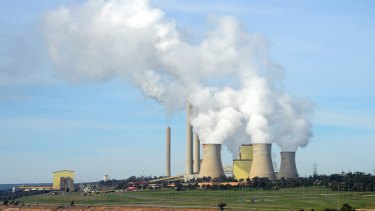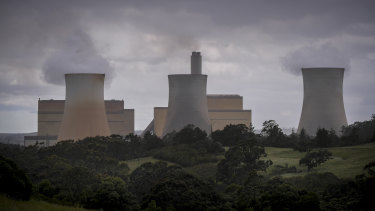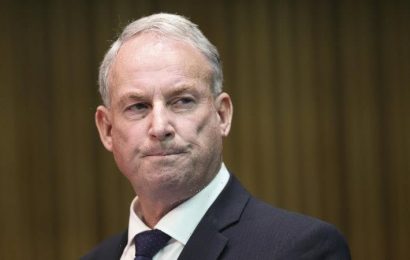Victoria’s environmental watchdog will not force the state’s heavily-polluting brown coal power stations to lower their greenhouse gas emissions, following a review and renewal of their licences.
For the first time, the Environment Protection Agency has introduced limits on mercury pollution, and tightened limits on other pollutants like sulphur dioxide and PM2.5. But no restrictions will be set on greenhouse gases, which will be capped at “approximately current levels”.
Steam billows from the cooling towers at the Loy Yang A coal-fired power station in the Latrobe Valley.Credit:Bloomberg
The aim of the long-awaited review, which began in 2017 and was released on Friday, was to ensure the licences were compatible with the latest science and “take into account community views and expectations”, the agency said.
Environment groups responded angrily to the review’s findings, describing it as a missed opportunity to reduce emissions from the three coal-fired power stations. Together, Loy Yang A, Loy Yang B and Yallourn are responsible for more than 40 per cent of the state’s climate emissions.
Environment Victoria chief executive Jono La Nauze said the review “made a mockery” of the Andrews government’s efforts to modernise the EPA and strengthen climate laws.
In the review, the EPA said that by limiting the emissions from other pollutants, it was capping the amount of coal that could be burned, therefore indirectly stopping greenhouse gases from increasing.
EnergyAustralia’s Yallourn coal power station in Victoria is being impacted by lower wholesale power prices.Credit:Eddie Jim
But Mr La Nauze said preventing emissions from increasing was different to actually reducing them.
“If this is the kind of decision we get in 2021, then Victoria’s climate laws simply aren’t up to the job and neither is our environmental regulator,” Mr La Nauze said. “The EPA is utterly missing in action on the biggest environmental challenge of all.”
Under the state’s Climate Change Act 2017, the EPA has the power to reduce Victoria’s climate emissions as part of the state’s target of net zero emissions by 2050, and has to consider climate change as part of any licence decision.
Environmental Justice Australia lawyer Bronya Lipski said it was unclear whether the revised limits would do anything to reduce air pollution, and noted there was no explicit requirement that power stations install pollution-reduction technologies.
“Ultimately there is no introduction of substantial pollution-reduction measures to bring the power station licences in line with international best practice,” Ms Lipski said.
Until now, Victorian coal-fired power stations have been allowed to emit unlimited levels of mercury, lead and fine particles. These controls were weaker than most countries, including China and the USA.
A spokesperson from the Australian Energy Council, which represents major electricity businesses, welcomed the new licences, saying they emerged from an “exhaustive” independent review.
The tighter limits on a range of emissions would be challenging, but the new licences would mean power stations could continue to play a “critical role in ensuring reliable and affordable electricity for Victorians”, the spokesperson said.
On Friday the EPA announced it would also change licence conditions for air emissions, wastewater, mines and landfill.
These will include, for the first time, limits and monitoring of mercury pollution levels, fine particles (PM2.5) and coarse particles (PM10).
Brown coal-fired power stations will also be required to monitor air emissions continuously, including nitrogen and sulfur dioxide, and share the data in real time through their company websites.
Yallourn and Loy Yang A will need to have rehabilitation plans for ash ponds and ash landfills. In 2015, an EPA inquiry found a ruptured ash disposal pipeline at Yallourn caused 8.6 megalitres of ash liquid to be dumped into the Morwell River. This breach of their licence resulted in a $7584 fine.
The EPA’s executive director of regulatory standards, Tim Eaton, said the changes had been made to protect the environment and health of the local community.
“Through our licence review we’re reduced emission limits and are making sure that the community has the best information about the emissions coming from power stations in a timely matter,” Mr Eaton said.
Both EnergyAustralia, which owns Yallourn, and AGL, which owns Loy Yang A, welcomed the review, and said the companies were supportive of the updated licences that focused on revised emissions limits.
Australia still operates 22 coal-burning power stations, some of which are among the oldest and most polluting in the world.
A response has been sought from Alinta, the owners of Loy Yang B.
Start your day informed
Our Morning Edition newsletter is a curated guide to the most important and interesting stories, analysis and insights. Sign up here.
Most Viewed in Environment
From our partners
Source: Read Full Article









